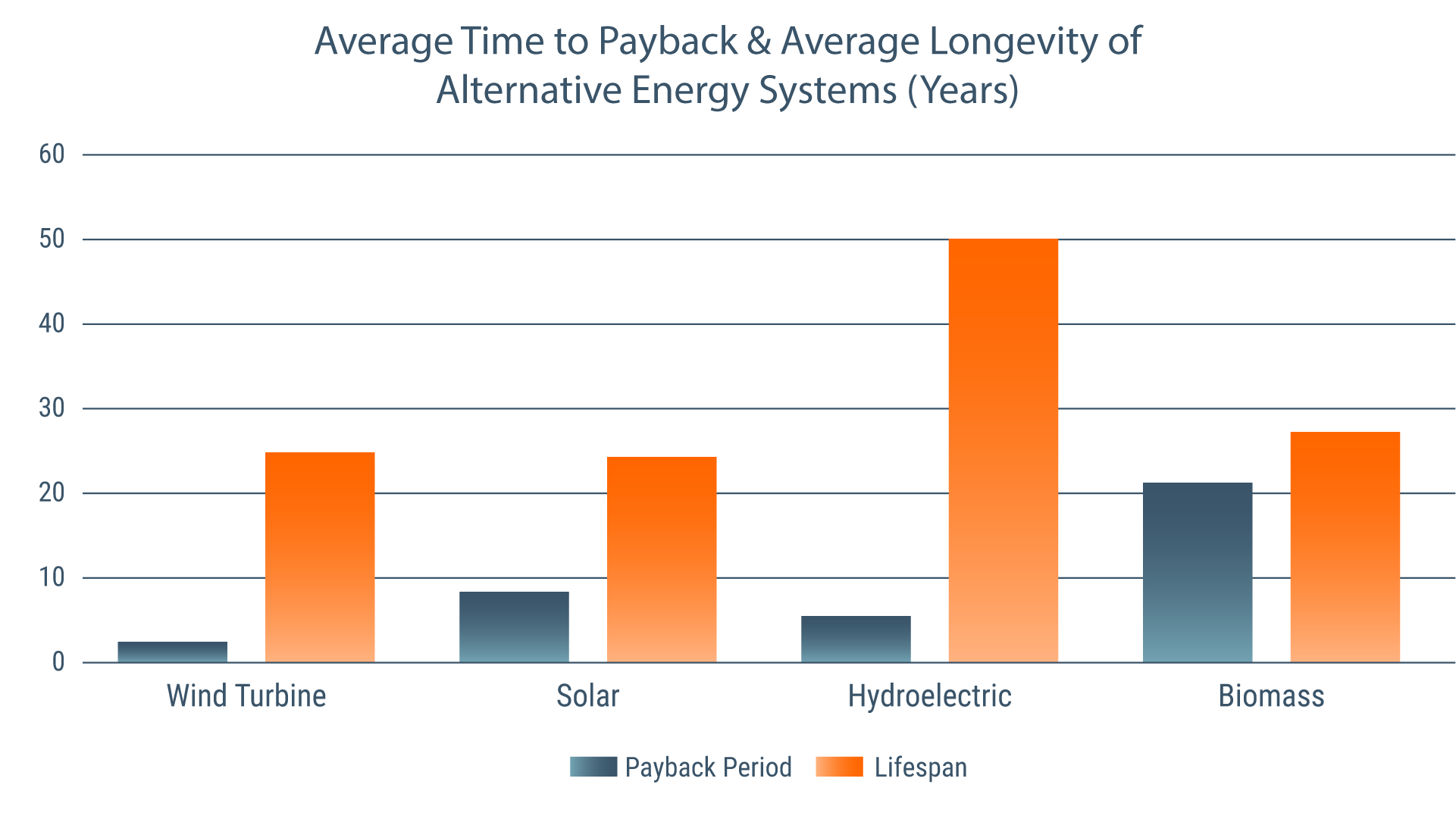Reducing Energy Consumption
If you’re reading this while relaxing on the couch, you’ve reduced your personal energy consumption—except, of course, for the electric light, air conditioning or heat, and battery operated laptop that keeps you comfortable and connected. That, in short, is the problem with reducing energy consumption: even the best green supply chain technology and practices require energy to manufacture, use, and maintain.
Companies have multiple ways to reduce energy consumption that balance out environmental benefit and cost, including due diligence into alternative energy sources, design for excellence initiatives, alternative material sourcing, and capacity and capability assessments.
Due diligence into alternative energy sources
Any company considering a switch in energy providers or sources needs to undertake due diligence and develop a due diligence playbook before making an investment. In general, alternative energy sources have a very short environmental payback period compared to their lifetime of generating energy. The environmental payback period is the time needed for an alternative energy source to repay the energy needed for its manufacture and installation.

However, payback is only one factor covered by due diligence. Others include:
- The health of the equipment manufacturer and the likelihood they will support their product in the future
- Any modifications required by the technology to the company’s equipment and processes
- The need to hire or upskill employees to use or maintain the technology.
Those issues reflect the reliability, cost, and long-term viability of an alternative energy source.
Another part of any due diligence initiative is collecting and analyzing data to identify trends, patterns, and anomalies in performance. With a playbook for due diligence, a company can periodically reassess the data and its energy choices to make better informed decisions.
Design for excellence initiatives
Design for excellence (DfX) initiatives should include calculations to determine if alternative product and packing designs will save energy. Among changes worth considering are:
- Lightweight Design: Lighter products and packaging often require less energy to transport and manufacture.
- Modular Design: Modular components can be easily replaced or upgraded, reducing the need for entire product replacements, extending the product's lifecycle, and reducing energy waste.
- Energy-Efficient Components: Especially for electronics and appliances, one method of conserving energy is to choose components and parts that are energy-efficient and have low standby power consumption.
- Energy-Related Features: Energy recovery systems can be incorporated in products; for example, capturing waste heat and converting it into usable energy. Smart technologies can lower energy usage based on real-time data; for example, thermostats that learn user behavior and adjust heating and cooling accordingly.
- Design for Disassembly: Easy disassembly, repair, and recycle reduces the need for new manufacturing processes and conserves resources.
- Lifecycle Analysis: The analysis should identify reliance on energy-intensive phases during raw material extraction, manufacturing, transportation, use, or disposal. Those phases can then be shortened or modified.
Alternative material sourcing
Many alternative materials require less energy to manufacture and are processed at a lower temperature, requiring less heating and cooling. Others are sourced locally, reducing the energy needed to transport them. Still others are based on renewable materials such as hemp, bamboo, or recycled raw materials. Companies that inaugurate alternative material sourcing begin with:
- Materials Selection: Recycle, biodegradable, renewable, or other materials have less environmental impact, are more energy-efficient to manufacture, and require less energy during the product's lifecycle.
Supplier’s may have suggestions for alternatives that the company hasn’t considered. They may also be willing to collaborate in improving their own energy consumption, with savings they pass along to their customers:
- Ally-Sourcing: Ally-suppliers are willing to adopt energy-efficient practices, such as sourcing materials and components from alternative sources. They are usually located in countries with energy conservation regulations that are similar to those in the company’s country.
- Supplier Optionality: Supplier optionality ensures that ally-suppliers are given careful consideration. Evaluations of both new and legacy suppliers should include information about their energy practices.
Capacity and capability assessments
A capacity and capability assessment evaluates a company’s ability to perform tasks and functions effectively. When applied to energy usage, it identifies areas where energy is being wasted or inefficiently used, and it provides insights into how energy consumption can be optimized. The capacity and capability assessment should uncover opportunities for:
- Efficient Manufacturing Processes: Optimize the manufacturing processes to reduce energy consumption. This could involve using lean manufacturing principles, automation, and more efficient machinery.
- Continuous Improvement: Implement a feedback loop that allows for continuous improvement in product design. Regularly gather data and user feedback to identify areas for refinement and energy-saving opportunities.
- Equipment Performance: Evaluating the performance of equipment and systems that consume significant energy and locate energy hotspots. This can help identify equipment that might be in need of maintenance, calibration, or replacement to ensure it operates at peak efficiency.
- Technology and Infrastructure: Evaluate the technology and infrastructure to determine how automation, sensors, and smart systems might optimize energy usage and reduce waste.
- Benchmarking and Best Practices: Reveal where your energy consumption stands compared to similar organizations.
Strategic planning to reduce energy consumption isn’t a one-time activity. Due diligence into alternative energy sources, design for excellence initiatives, alternative material sourcing, and capacity and capability assessments should be undertaken periodically to ensure that energy reduction goals and energy management plans are in force and understood by the entire organization.
Related Resources
Ready to improve your consumer demand forecasting?

Talk to us
From rapid sprints for short-term gains to transformation for competitive advantage we are here to get you there.
Schedule a discussion
Submit this form to speak to an SGS Maine Pointe representative.
Prefer a call? (781) 934 - 5569




